'If music be the food of love, play on.' - Twelfth Night, William Shakespeare
It is not the sound of love when many mosquitos were buzzing close to my ears throughout the intertidal survey trip at Chek Jawa. This trip has got to be the earliest intertidal survey trip I had ever embarked on. The mosquitos were not the only organisms expressing their "love" to me. My nose was also expressing its "love" to me as I sniff, sniff, sniff and even more sniffing throughout the whole time I was on the shore.
My nose and the mosquitos may be hindering my attention span on the shore, but my vision did not fail me. On my very first intertidal survey trip on Chek Jawa, there are many interesting critters to be seen.
Reaching the shore at about 2am, the tide was still quite high for the coral rubble area to be exposed. We began our survey by checking the pillars that supports the boardwalk along the coast. It was full of life.
There were plenty of these tube structures weaved on the pillar surfaces, which I think are worm tubes.
 |
| Worm tubes? |
The tube structure may look plain and boring but on closer observation, there are tiny marine snails crawling everywhere. The
rock periwinkle snails are plentiful on the pillars. They are everywhere and in various sizes.
 |
| Crawling rock periwinkle snail, with a tiny one on the right. |
At low tide, the
purple climber crabs (
Metopograpsus sp.) are scrambling around on the boardwalk pillars busying feeding themselves. Many of them are very sensitive to human presence while some just froze and think that I could not see them.
 |
| Purple climber crab |
 |
| Hiding under the yellow bead ascidians |
The clusters of yellow blobs are not egg mass but the
yellow clustered bead ascidians (
Eudistoma sp.) Here is a photo showing the difference between exposed and submerged form of the ascidian.
 |
| Ascidians |
Also on the pillars are the
star limpets (
Patelloida saccharinoides) who do not seemed to have travelled anywhere beyond that spot.
 |
| Star limpets |
Many
lined bead anemone (
Diadumene lineata) are also housed on the pillar surface. Some of them have pretty orange lines on it.
 |
| Lined bead anemones (dark blobs) |
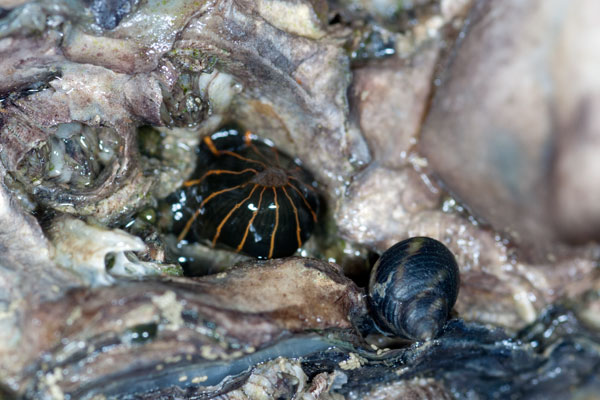 |
| Lined bead anemone with visible orange lines |
I spotted a
cowrie on one of the many pillars I visited. I decided not to disturb this moving cowrie to look at its shell. On the shore, I saw a
miliaris cowire (
Cypraea miliaris).
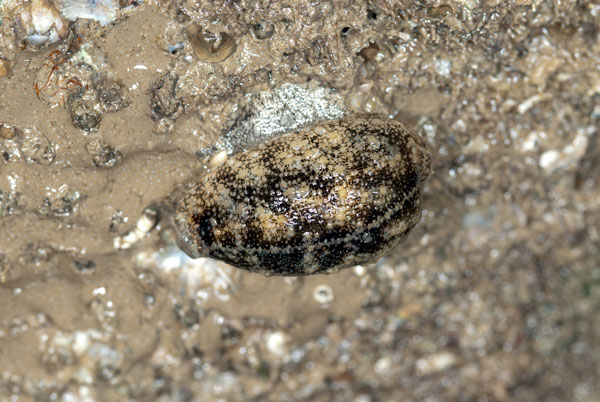 |
| Cowrie |
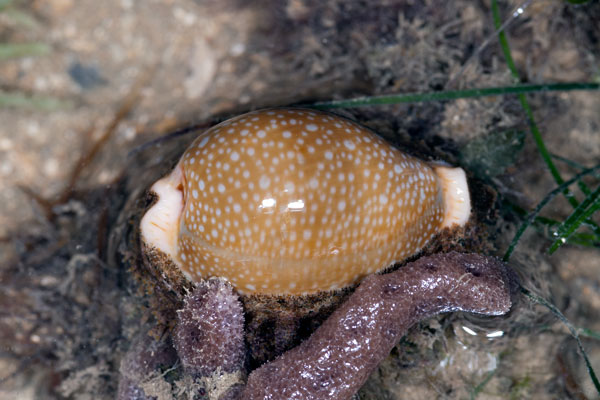 |
| Miliaris cowrie |
This looks like a sponge with a kick of nasty spicules on its surface. Spicules are small needlelike structures that supports soft tissues of invertebrates like sponges. When handled with barehands or even with gloves, the spicules will pierce into the skin surface and break off from the invertebrate, causing slight pain and irritating when the skin is being rubbed. Usually these spicules can be gently removed while placing the affected skin against light.
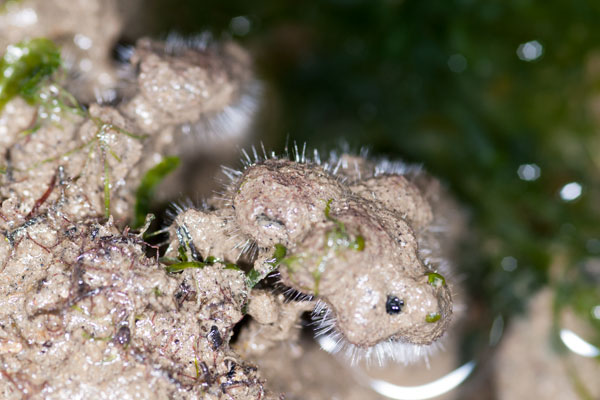 |
| Sponge spicules? |
As the tide goes out, the shore is slowly exposed, showing the spread of the
sea lettuce (
Ulva sp.)on the shore. The sea lettuce provides great hiding spots for many marine animals, one of which are the shrimps. Various types and size of shrimps are found among clumps of sea lettuce.
 |
| Shrimp 1 |
 |
| Shrimp 2 |
Nearby,
a worm an isopod was busying feeding on a seagrass blade surface. (Thanks to Rene for the correction.)
 |
| Marine worm |
In one of the pools formed by sea lettuce clusters, I saw 2
carpet eel-blenny (
Congrogadus subducens). They are very well camouflaged with the sea lettuce when they stay still.
 |
| Spot the head. |
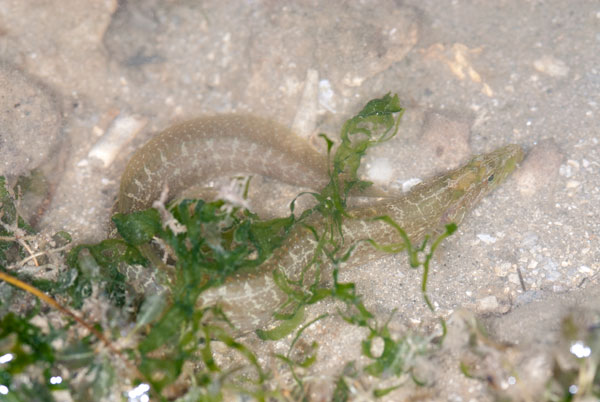 |
| 2nd carpet eel-blenny |
Usually we check suspicious moving floating leaves. Most of the time, the
leaf porter crab is the culprit of these suspicious moving leaves. This time, flipping of leave is not required. While walking, I spotted a mama leaf porter crab floating crab side up on a leaf. The mama crab has eggs! She was seen paddling herself on the water surface. Shortly after noticing that she was spotted, the leaf porter crab flipped herself and went deeper into the water.
 |
| Mama leaf porter crab carrying eggs. |
The
biscuit sea star (
Goniodiscaster scaber) seems to be doing rather well at Chek Jawa as the team saw quite a number of them distributed on different parts on the seagrass bed and the coral rubble area.
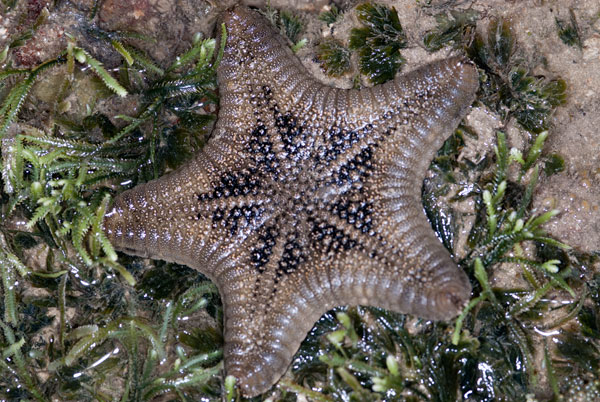 |
| Biscuit sea star, overview. |
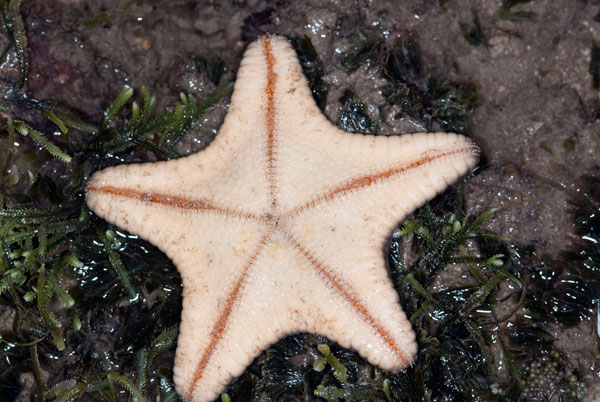 |
| Biscuit sea star, underside |
Other sea stars seen on this trip includes 2
cake sea stars (
Anthenea aspera), 2
spiny sea stars (
Gymnanthenea laevis), 1
plain sand star (
Astropecten sp.) and I found a
red scaly sea star (
Nepanthia belcheri) while Kok Sheng found a juvenile
knobbly sea star (
Protoreaster nodous). Here are the photos of the various sea stars that I saw.
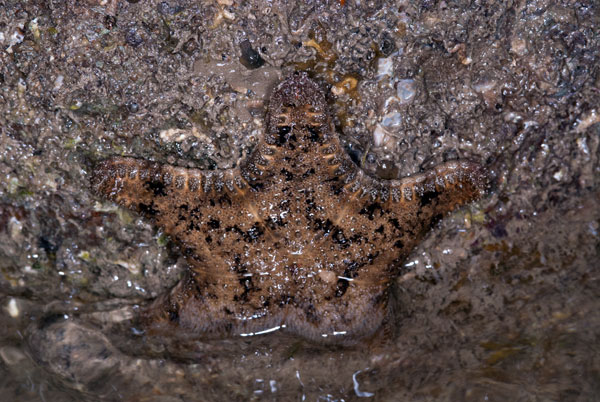 |
| Cake sea star seen on boardwalk pillar |
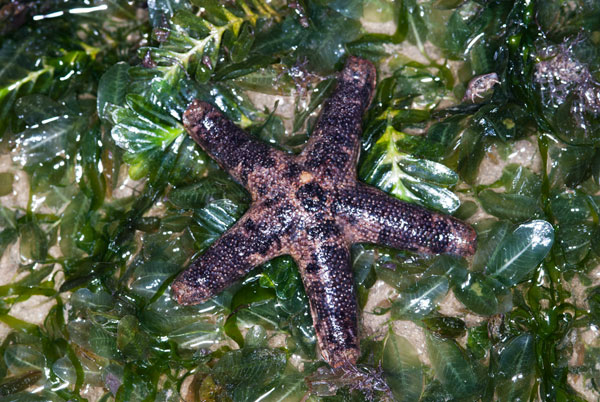 |
| Red scaly sea star, overview. |
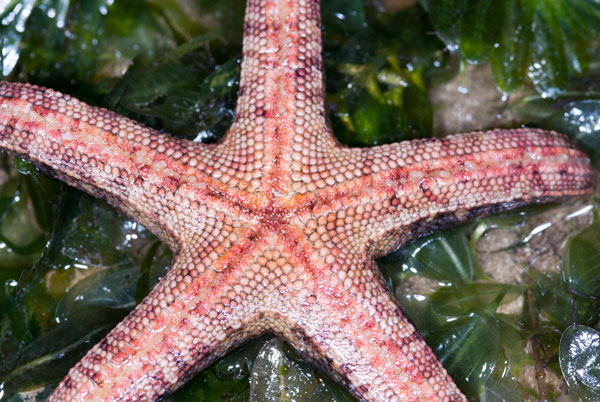 |
| Red scaly sea star, underside. |
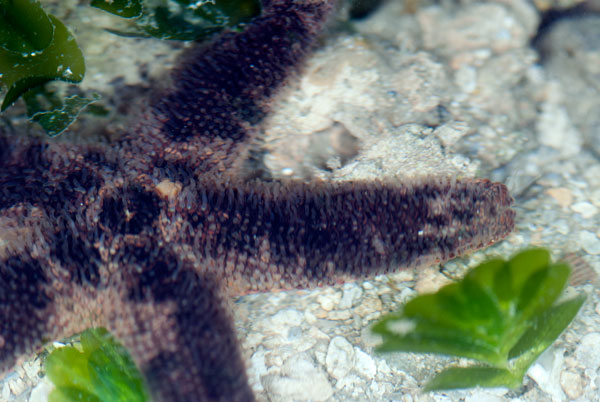 |
| Red scaly sea star submerged, showing tiny transparent finger-like structures (papulae). |
 |
| Pretty spiny sea star, overview. |
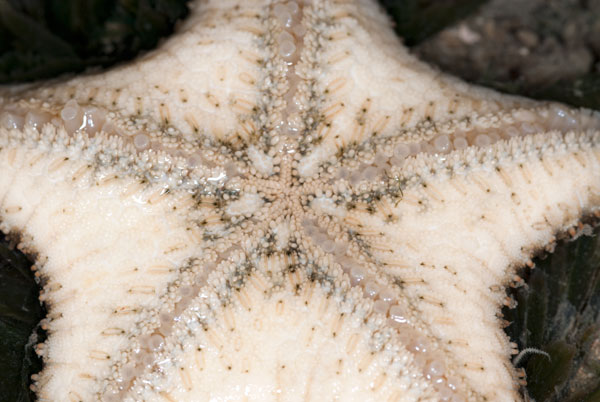 |
| Spiny sea star, underside. |
 |
| Pretty cake sea star, overview. |
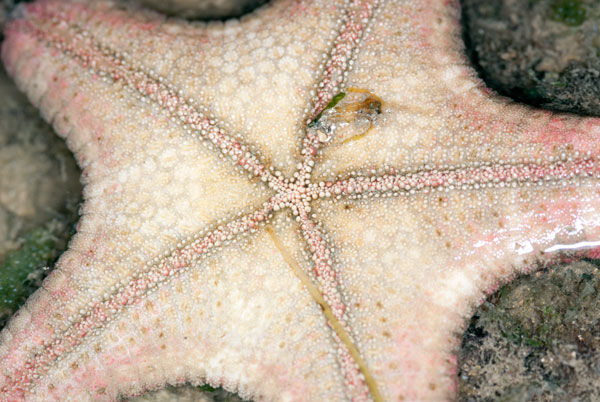 |
| Cake sea star, underside. |
 |
| Plain sand star |
Over surfaces at the coral rubble area, there were many
posy anemones scattered around. This is probably my first time seeing them open up on the shore. I think I have seen these anemones before but did not really take notice of their existence.
 |
| Posy anemone |
The
blue-lined flatworm (
Pseudoceros sp.) and the
blue-spotted flatworm (
cf Pseudoceros indicus) are the only flatworms that I saw.
 |
| Blue-lined flatworm |
 |
| Blue-spotted flatworm |
This is one interesting crab, which I have never seen before. The joints on its claws looked somewhat different from the crabs I have seen. It could be the juvenile form of a bigger crab?
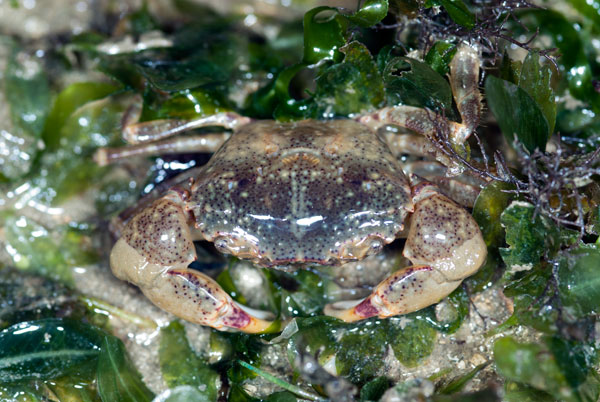 |
| Unknown crab. |
The
flower crabs (
Portunus pelagicus)on Chek Jawa are probably the largest I have seen dead or alive. It was so big and wide that I had problem fitting the whole crab into my frame with a 105 mm lens.
 |
| Can you see the flower crab? |
 |
| Flower crab |
Oh dear, Chay Hoon and I found a large flower crab entangled in a very long driftnet.
 |
| Flower crab entangled in a driftnet. |
We estimated that the driftnet is of at least 200 m long and Ivan attempted to free and document as many dead or alive animals as he could but there was only some time left for him to cover a small section. Driftnets in Chek Jawa pose great danger as it can entangle and kill dugongs that come to feed on the seagrass meadow. Read more about this driftnet we encountered at the
Project Driftnet blog.
This is not scum but it is actually a sap sucking slug found by Chay Hoon, our sea slug enthusiast. Chay Hoon shares on her Facebook that this sap sucking slug has been identified by Dr Kathe Jensen to be from the genus
Pattyclaya. Dr Jensen is not sure of the exact species at the moment but it could be a new species.
 |
| Pattyclaya sp. |
Another sea slug seen on this trip, spotted by Kok Sheng is the
emerald slug (
Stiliger smaragdinus).
 |
| Emerald slug |
On the fish side, Ivan spotted a
blue-spotted fantail ray (
Taeniura lymma) lying quietly among
fern seagrass (
Halophlia spinulosa). We have to watch where we step while working on the shore in the dark as marine animals such as the blue-spotted fantail ray is one of the animals that can cause injury to us if we are not careful.
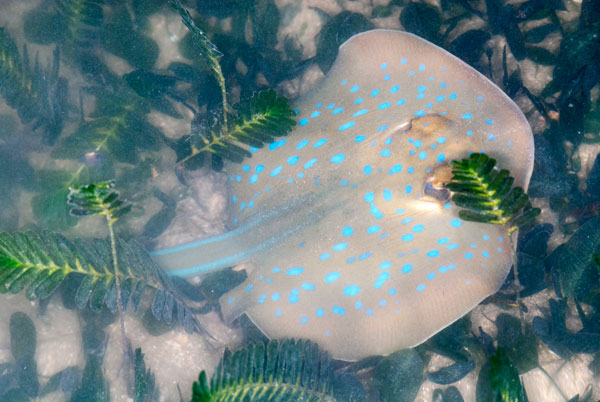 |
| Blue-spotted fantail ray |
Other types of fish seen on this trip includes
streaked rabbitfish (
Siganus javus),
three-spined toadfish (
Batrachomoeus trispinosus),
longspined scorpionfish (
Paracentropogon longispinis) and a
broad-nose halfbeak.
 |
| Streaked rabbitfish |
 |
| Toadfish |
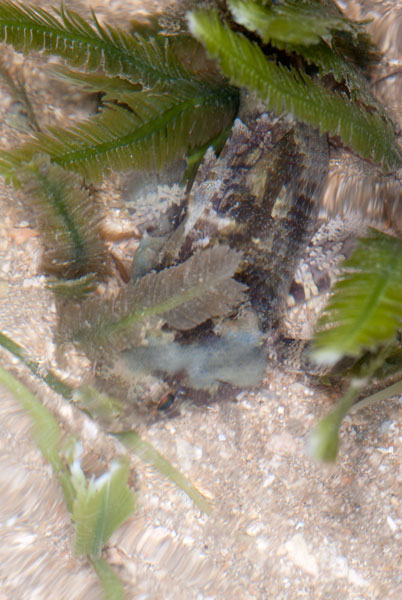 |
| Scorpionfish |
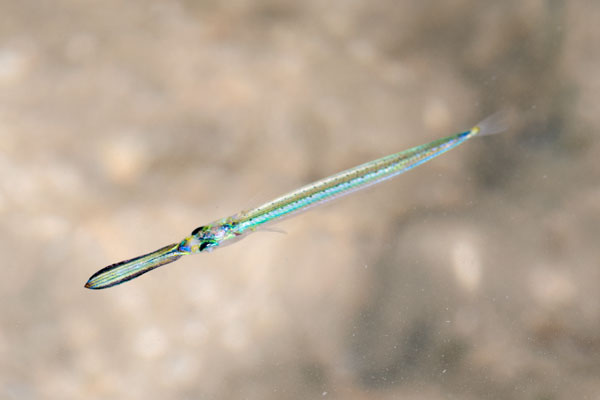 |
| Broad-nose halfbeak |
Oh look! It is a rather fresh moult of a swimming crab.
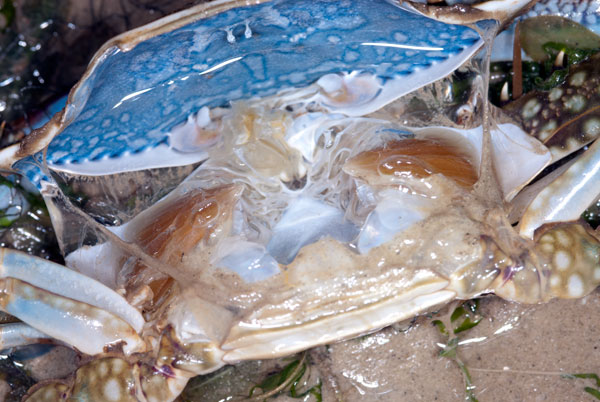 |
| Swimming crab moult |
 |
| Closer look inside, where the gills chambers are located. |
Taking the opportunity that we are working on the shore in darkness, it was the perfect time to photograph the very shy crabs that create an intriguing sand art. I am referring to the balls of sand they leave on the shore at low tide. The crabs that create the sand balls are actually the
soldier crab (
Dotilla sp.) and sand bubbler crab (
Scopimera sp.). They are very sensitive crabs and will go into hiding when they sense movement on the shore. However at night, they are more comfortable with my presence so minimal waiting is required to photograph them though some will still disappear into their burrows.
 |
| Soldier crab |
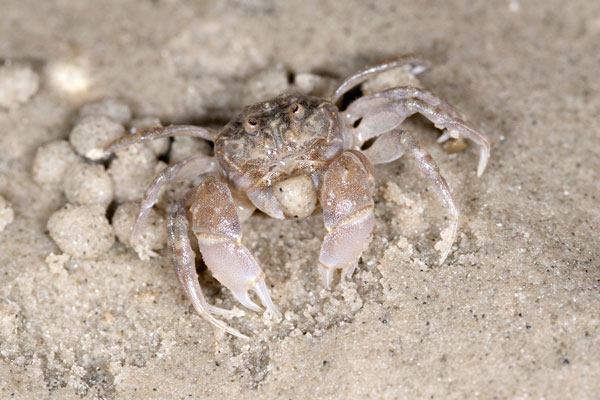 |
| Sand bubbler crab, working on a ball of sand. |
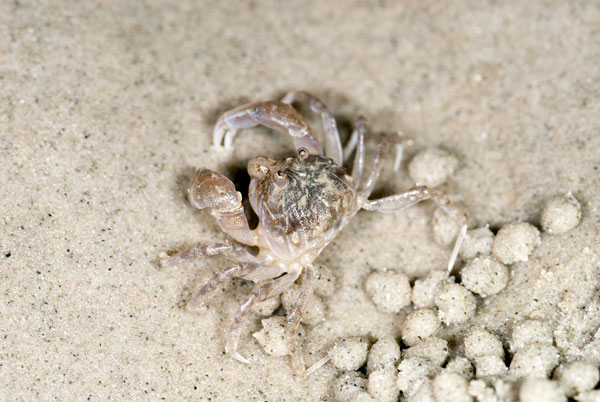 |
| Overview of the sand bubbler crab |
 |
| Comparing the crab side to the ball of sand |
It was a long and exhausting intertidal survey trip, with an uncooperative nose of mine. My impression of Chek Jawa is much more diverse based on many online posts but this trip has opened my eyes to the current state of Chek Jawa. We have lost many of the diversity from the
mass death in 2007. Our shores are very fragile and precious and many of the natural shores have been lost to urban development. Even islands such as Pulau Ubin, where Chek Jawa is located, is being scheduled for future development.
It is a tiring effort to document our precious shores, but I enjoy do it and I have learnt a lot about our biodiversity. Only very few of us are crazy and dedicated enough to wake up at such crazy timings (like 1am) in the morning to survey the shores and share with everyone the marine biodiversity Singapore has.
This intertidal survey trip was possible with permission and support from the National Parks Board (NParks).
Posts by others on this tripChay Hoon -
Facebook photo albumKok Sheng -
Chek Jawa coral rubble survey after 4 yearsRia Tan -
Predawn at Chek Jawa, after 10 years
















































